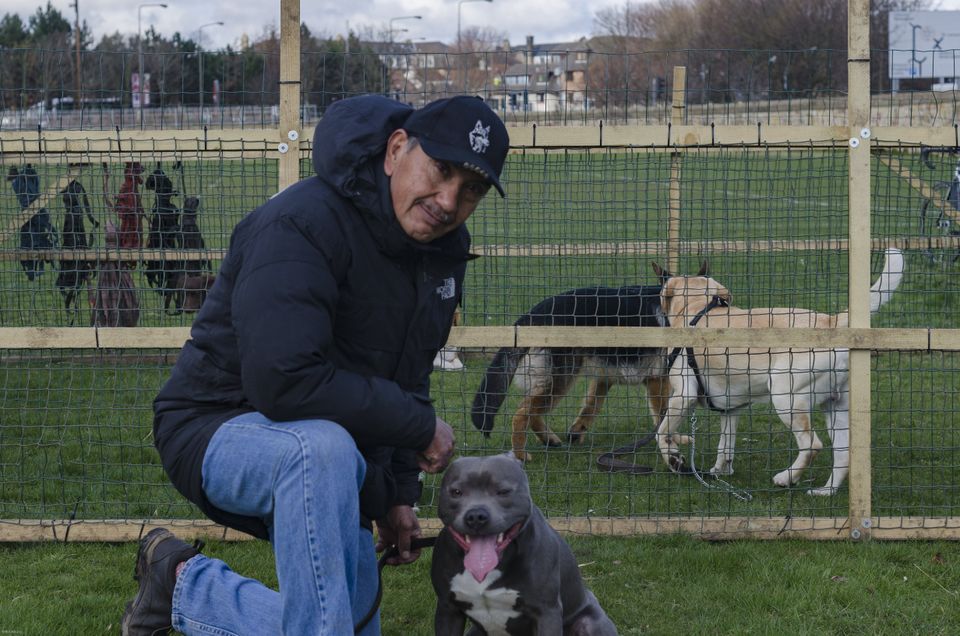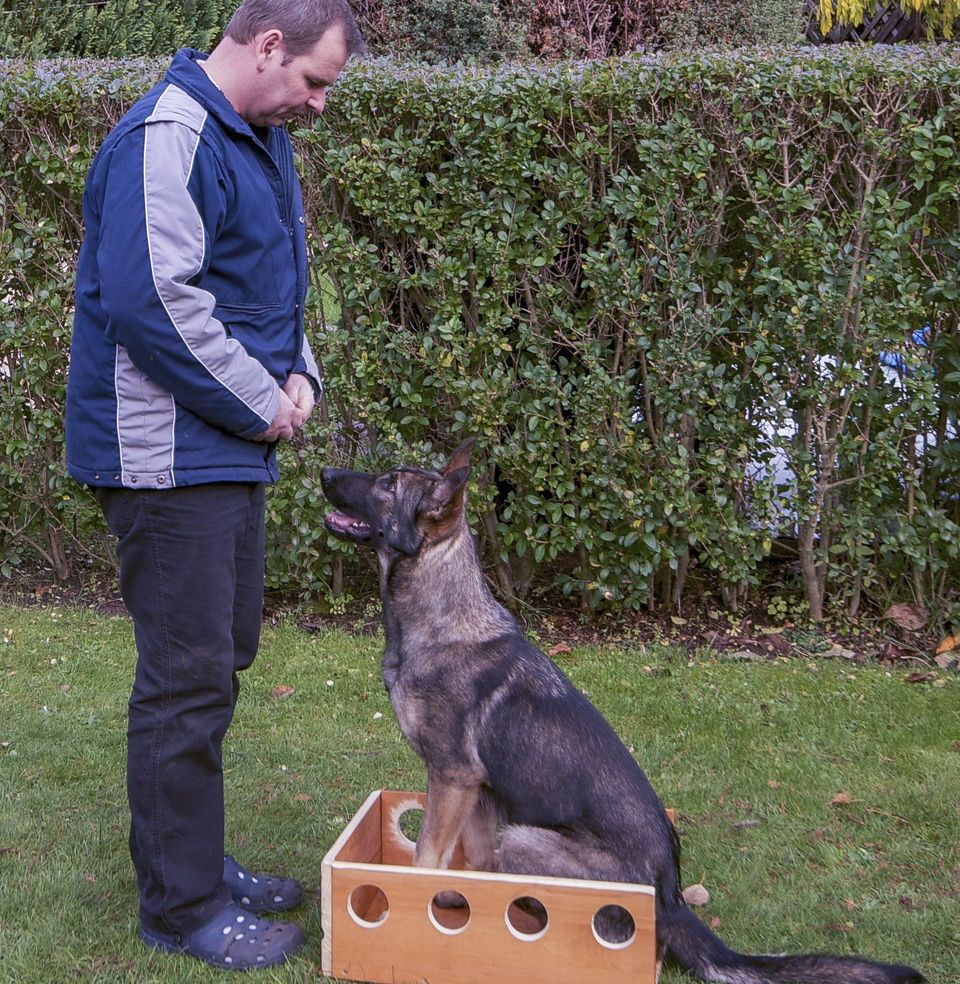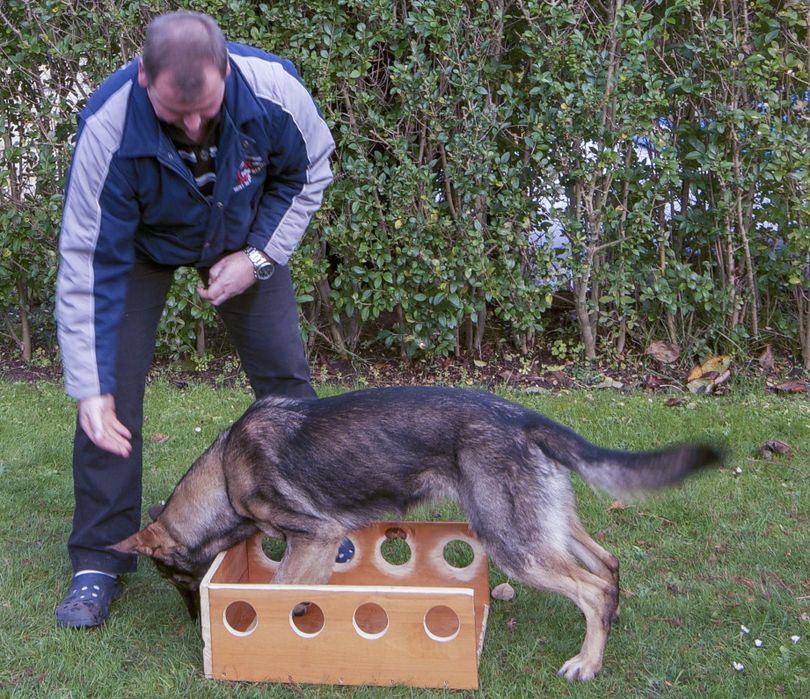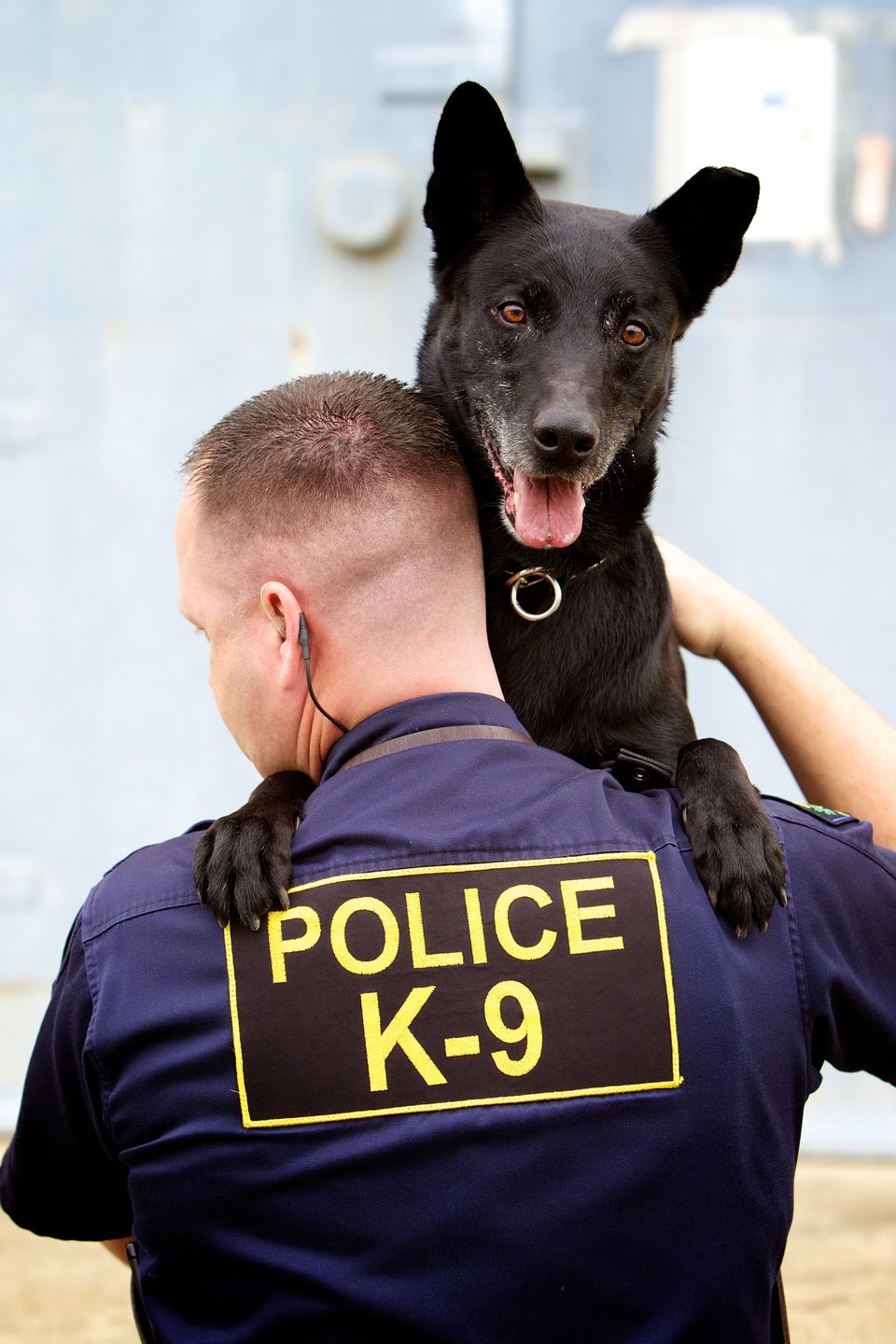- HOME
- TRAINING
- Obedience
- Behaviour
- Videos
- Latest Newspaper Articles
- ABOUT US
- PUPPIES
- HOUSE BRAKING
- EATING HABITS
- JUMPING ON PEOPLE
- BITING HANDS
- BITING FURNITURE
- Destructive Attitude
- SEPARATION SYNDROME
- SHYNESS
- Dominant Dog
- Sheep worriers
- Excessive aggresiveness
- Dog vs dog
- Chasing
- Dominance aggression
- Sibling rilvary
- Fear aggression
- Pain induced aggression
- Dog agility
- Testimonials
- Dog photo Studio
- CONTACT
- Latest News
TRAINING

Our methods vary according to specific characteristics of the dogs breed , age and owners personality and age group , we have different options for every different case of obedience or behaviour modification therapy .And the owner of the dog decides which path of training we will follow in my humble experience all methods work the difference is based primarily in taste personality of the owner of the dog.
Food oriented (clicker method.)

This method started when in the late 40' Ivan Pavlov coined the term condition reflex with his salivating dogs .The concept for which Pavlov is famous is the "conditioned reflex" (or in his own words the conditional reflex: He had come to learn this concept of conditioned reflex when examining the rates of salivations among dogs. Pavlov had learned then when a buzzer or metronome was sounded in subsequent time with food being presented to the dog in consecutive sequences, the dog will initially salivate when the food is presented. The dog will later come to associate the sound with the presentation of the food and salivate upon the presentation of that stimulus.
We can use this method for puppies and is based on rewards to make it easy for owner and puppy , also fun puppies have a shorter attention span aprox 20 minutes , so we want to keep it easy and fun, it takes longer than other methods but for puppies is a good option .
Older dogs can be trained in this fashion to , specially those who are food oriented like Labradors .


Strictly following the model set out in the Koehler Method of Dog Training, some 50 years later, the Koehler method continues to be taught in both class and private training formats. The method is based in the philosophy that a dog acts on its right to choose its actions. Koehler explained that a dog's learned behaviour is an act of choice based on its own learning experience. When those choices are influenced by the expectation of reward, the behaviour will most likely be repeated, and when those choices are influenced by the anticipation of a gentle correction that can be not getting treat (food) that the dog is used to get, they will most likely cease. Once the dog has learned that its choices result in comfort or discomfort it can be taught to make the correct decisions. Action→Memory→Desire encapsulates the learning pattern used by the method; the dog acts, remembers the consequences, and forms the desire to repeat or avoid those consequences. Adherents believe that once the behaviour has been correctly taught, it should be performed, thus making any correction, fair, reasonable, and expected.While the model has been used consistently since 1962, some of the punishment procedures described in the book are now not considered necessary,so the techinics have develope into a more modern an scientific approach , us for exple don't believe in strong corrections and our Golden rule is that we will never give a correction until i am 100% percent sure that the dog knows what i want and we can even resource in some cases to food reward methods in order to make it easer for the dog and owner .
Schutzhund
Schutzhund tests dogs of all breeds for the traits necessary for police-type work. Dogs that pass Schutzhund tests should be suitable for a wide variety of tasks: police work, specific odor detection, search and rescue, and many others. The purpose of Schutzhund is to identify dogs that have or do not have the character traits required for these demanding jobs. Some of those traits are:
- Strong desire to work
- Courage
- Intelligence
- Trainability
- Strong bond to the handler
- Perseverance
- Protective Instinct
Schutzhund tests for these traits. It also tests for physical traits such as strength, endurance, agility, and scenting ability. The goal of Schutzhund is to illuminate the character and ability of a dog through training. Breeders can use this insight to determine how and whether to use the dog in producing the next generation of working dogs.
Schutzhund sport has change a lot in recent years as becoming a very popular sport for amateur owners or Germab Sheppards , Rottweillers , Belgian Sheppards just to mention a few breeds bascally working breeds ,in the U.K is a very popular sport that has every year many trial competitions forSchutzhund enthusiats all over the U.K
French Ring Sport is a dog sport involving jumping, obedience (breaking in exercises), and bite work. It is most similar to Belgian Ring,Campagne and KNPV, but also sharing common elements with Schutzhund and Mondio Ring. French Ring Sport rules are set by Groupe Travail Ring under the mandate of Commission D'utilisation Nationale Chiens de Berger et de Garde, a committee run under the patronage of the Société Centrale Canine. To participate in French Ring Sport, a dog must first pass the Certificat de Sociabilité et d’Aptitude à l’Utilisation (Certificate of Sociability and Aptitude for Work) temperament test. French Ring Sport defines three earned levels, after earning a Brevet (Certificate) for Dogs of defense; Ring I, Ring II and Ring III. Each introduces progressively more difficult situations and makes greater demands from the dog. The trial is divided into three sections: Jumps, obedience (breaking in exercises), and protection. Obedience is emphasized in all three sections.
When competing in Ring, the dog has no collar or leash on at any time except during the heel on leash. No food rewards or physical corrections are allowed at any time while competing. Also, excessive praise or petting will result in a loss of general outlook points. Points for an exercise will be lost for multiple commands, incorrect commands, or failure of the dog or handler to perform the exercise correctly. Control is emphasized from the moment the dog/handler team walks onto the field, until they leave at the end.
Ring Sport consists of a number of exercises. A dog that has been trained for Ring III level of competition will be able to do the following.
Heel on a leash: in a pattern determined by the judge with multiple stops and starts, left and right turns
Heel with muzzle: heeling off leash while the dog wears a muzzle in a pattern determined by the judge with multiple stops and starts, left and right turns
Long sit/down: done with the handler out of sight, the dog stays in a pre-drawn position 1 min.
Food refusal: dog is thrown 4 pieces of food (usually meat or cheese) while on a down stay with the handler out of sight. Dog must not eat the food, and if it is "accidentally" thrown into dogs mouth, he must immediately spit it out. The field is also baited with 6 pieces of food, in strategic locations (i.e. by blinds, jumps, area dog runs over during send away, etc.).
High Jump: dog jumps a hurdle on command, then does a return jump on command and comes to a heel position by the handler, minimum hurdle height 0.9m for 8 pts (1m = 39.37in)
Palisade: dog jumps and climbs over a wooden wall, minimum height 1.7m, then does a return jump and returns to handler
Long Jump: dog jumps a pvc/metal "key" long jump on the ground, minimum length 3m
Positions: the dog is told to sit, stand and down in a pre-drawn order. the handler is 18m away. points are lost for creeping forward during the positions, or failure to perform a position
Thrown Retrieves: the handler throws the item at least 5m, on command the dog retrieves the item and presents it to the handler. the retrieve object can be any object such as a glove, wallet, rolled up sock, glasses case, etc.
Unseen Retrieve: handler and dog are heeling, handler drops the object on the opposite side from the dog, a similar object is placed next to the retrieve object, at a signal dog and handler turn around, and dog is sent to retrieve the object. points lost for mouthing object, 0 points if dog retrieves wrong object
Seen Retrieve: the handler drops the object on the same side as the dog and the dog immediately picks it up, runs completely in front of the handler who then stops walking, then dog returns the object to the handler.
Send Away: the dog is told to run in a straight line away from the handler until called, then it returns to the handler
Face Attack: the dog is told to attack a decoy who is facing him about 40m away behaving in a menacing fashion, with out/recall
Fleeing Attack: the dog is told to attack a decoy who is running away, with out/recall after the bite/fight
Defense of Handler: handler, dog and decoy approach each other and have a short conversation, then continue walking. the decoy turns around and comes up behind the handler, and as soon as the decoy "attacks" (obvious "hit" on handler) the handler, the dog bites the decoy. After the dog is told to out, he guards the decoy until recalled. the dog must stay with the handler until the attack, most dogs are taught to heel facing backwards for this exercise
Attack with Gun: the dog attacks a decoy who is firing a gun, twice during the attack, and once after the bite. After the bite/fight, the decoy freezes, the dog lets go and guards the decoy. The decoy tries to escape twice, the dog bites each time, then the handler disarms the decoy and heels the dog away.
Search, Hold, and Bark with Escort: The dog finds the decoy who is hidden in one of six blinds, and barks to indicate the decoy has been found. The decoy attempts to escape, while firing a gun, and the dog stops the decoy by biting. The decoy attempts another escape and fires the gun, dog stops decoy by biting. Handler outs dog, then disarms the decoy and retreats at least 3m. The dog escorts the decoy to a designated spot, preventing two more escape attempts by biting. The dog has no set pattern to run the blinds in as long as he finds the decoy in the allotted time.
Stopped Attack: This is done exactly like the face attack, with the decoy acting menacing and the dog being told to attack. When the dog is 1 to 4m away, the handler calls the dog who returns to the handler without biting the decoy. Points are based on the distance from the decoy when the dog is recalled, with 0 points if the dog bites. the handler must behave in every way exactly the same up until the recall command for the call off and face attack (EX sneeze during one, you better for the other)
Guard of Object: the dog is told to guard an object, and the handler goes to a place out of sight. The handler does not participate in any way again, until it is time to retrieve his dog. The decoy tries three times to steal the object, and the dog stops the decoy each time by biting. as soon as the dog bites, the decoy must freeze for 5 seconds, however if the dog lets go then rebites, the decoy can begin to move. As soon as the decoy begins to move away from the object, the dog lets go to remain close to the object he is guarding. Points are lost for biting too soon, allowing the decoy to move or completely steal the object, being dragged away from the object, etc